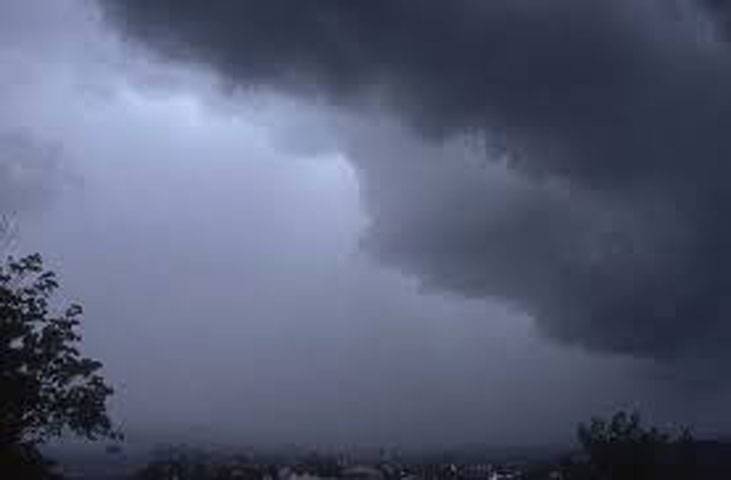LAHORE - Country is likely to receive close to normal rainfall during the monsoon season this year, experts predicted on Sunday.
Using local, regional and global data available till June, experts have predicted slightly less than normal rainfall for the country, from July to September.
The experts, however, predicted extreme rainfall in Kashmir, North East Punjab and Khyber Pakhtunkhawa due to interaction of easterly and westerly system, resulting into flooding.
Global climate models suggest that moderate El Nino conditions will persist that normally suppress the monsoon rainfall in South Asia. However, there is a probability of basin wide warming in the Indian Ocean resulting Positive Indian Ocean Dipole in August/September, giving roots to some active monsoon in South Asia.
Monsoon rains will mainly concentrate in Azad Jammu and Kashmir, Northeast Punjab and upper Khyber Pakhtunkhawa with extreme precipitation events sometimes, exceeding 200mm per day. In second fortnight of July, monsoon currents will also penetrate south-eastern parts of the country, producing scattered rainfall in Sindh and eastern parts of Balochistan. As such overall availability of water from monsoon rainfall in the country will be satisfactory.
Monsoon will gradually pick up rhythm in second and third week of July, giving rainfall in most of the areas of Azad Jammu and Kashmir, Punjab and Khyber Pakhtunkhawa, with one or two extreme rainfall events in second and third week.
Meteorological expert Shaukat Ali Awan said, “Overall rainfall in the monsoon will be close to the normal. As such availability of water will be satisfactory.
Besides rains from incursions from Bay of Bengal and westerly system, porographic effects will give good rains in hilly areas. Excessive heating can also develop local system that can give rains in some areas. These rains, coupled with some extreme events, will bring the overall monsoon rains close to normal.”
He added the rains in catchments would increase flow and create flood like situation in major river, especially Chenab. Meanwhile, plains of the country including Lahore remained in the grip of sultry weather on Sunday with excessive loadshedding adding to the woes of heat stricken people. People preferred to stay indoors on a holiday, decreasing traffic on otherwise busy roads.
In Lahore, people thronged the Lahore Canal to get some respite from the harsh weather conditions. Not only youth but also elderly people were seen bathing in the Canal. At certain places, even women were seen beating the heat by taking a dip in the mud coloured canal water.
Moenjodaro remained hottest place in the country where mercury rose as high as 47 degree Celsius. Mercury touched 46C in Dalbandin, Larkana, Rohri, Nokkundi and Sukkur, 45C in Bannu, Bhakkar, Shaheed Benazirabad, Sibbi and Chillas. Maximum and minimum temperature in Lahore was recorded 41C and 30C respectively. Relative humidity in the evening was recorded 42 percent.
According to the experts, seasonal low lies over northwest Balochistan and adjoining areas with its trough extending north-eastwards. Monsoon currents are penetrating into central and upper parts of the country and expected to strengthen from tonight and likely to continue during next couple of days.
Local meteorological department has forecast cloudy weather with chances of rains for Lahore during the next couple of days. Met office has forecast rain-thundershowers at scattered places in Hazara, Rawalpindi, Lahore, Gujranwala, Sargodha, Sahiwal divisions, Islamabad and Kashmir and at isolated places in Malakand, Peshawar, Kohat, Bannu ,Zhob, Sukkar and Larkana divisions and upper FATA. Isolated heavy falls are also expected in Lahore, Gujranwala, Rawalpindi divisions and Kashmir.
Friday, April 19, 2024
Monsoon to lash upper parts

No damage to Iranian nuclear sites after Israeli airstrikes, says UN nuclear watchdog
12:50 PM | April 19, 2024
Ch Shafay visits Directorate of Consumer Protection Council
April 19, 2024
ECP reviews arrangements for by-elections in Punjab
April 19, 2024
Punjab’s price control initiative: A welcome step
12:33 PM | April 19, 2024
A Tense Neighbourhood
April 19, 2024
Dubai Underwater
April 19, 2024
X Debate Continues
April 19, 2024
Hepatitis Challenge
April 18, 2024
IMF Predictions
April 18, 2024
Kite tragedy
April 19, 2024
Discipline dilemma
April 19, 2024
Urgent plea
April 19, 2024
Justice denied
April 18, 2024
AI dilemmas unveiled
April 18, 2024
ePaper - Nawaiwaqt
Advertisement
Nawaiwaqt Group | Copyright © 2024





